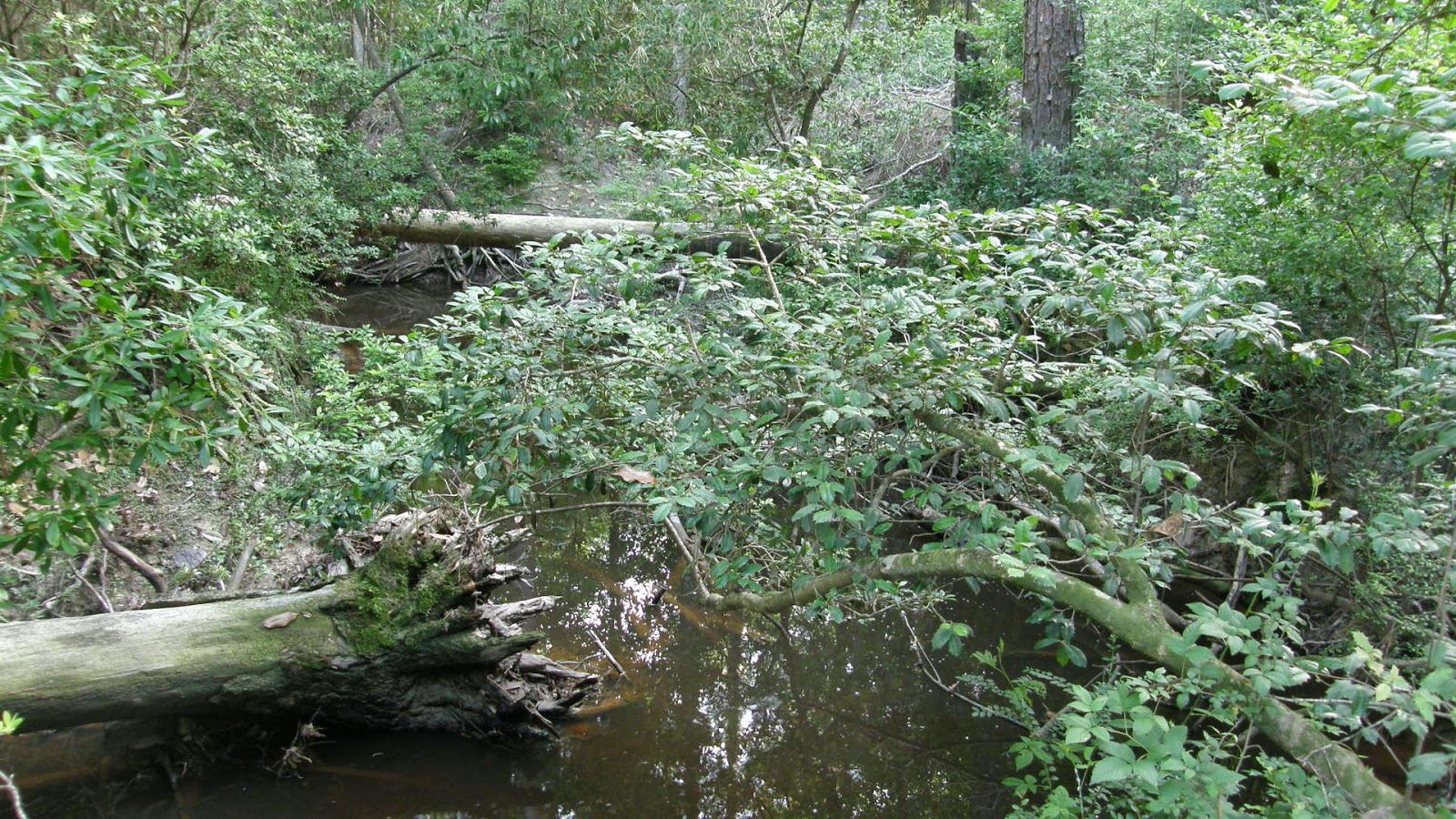IBWOH's: Brian Carlisle, Christopher Carlisle
Summary: Brian and I were in the 900+ acre Leaf Wilderness at dawn. Our goal was to travel northeastward from the remains of the trailhead, to Horseshoe Lake, a landlocked oxbow off the west bank of the Leaf River. We covered several miles of mixed bottomland, along with several high ridges which held some nice oak, pine, and magnolia. It was not too warm. After about four hours, our trip was complete. There were no kents or DK's (double-knocks), but we found some intriguing woodpecker work. It was very difficult terrain. We attempted, as always, to move silently through the woods, but there was inevitably much snapping of branches underfoot, as well as the wet ground sucking loudly at our boots. We only saw two snakes; other wildlife included a deer, two box turtles, a Hooded Warbler, many singing Prothonotary Warblers, and two Yellow-crowned Night Herons (one adult, one juvenile).
This first group of photos were taken by me. Several turned out rather blurry, unfortunately; but some of Brian's did, too, apparently, so I do not feel so bad.
Brian's photos turned out much better. He is our group's chief photographer.
Conclusions: The Leaf Wilderness, while relatively small, abuts the Leaf River WMA (part of the larger DeSoto NF system), three Nature Conservancy preserves, and the Pascagoula WMA, putting it in the heart of a vast network of nearly unbroken Ivory-bill habitat. It includes both bottomland hardwood and mixed bottomland, swamp, and mixed upland forest, which would afford Ivory Bill a variety of potential food sources. Needless to say, we will return to this Wilderness, probably many times in the years to come.
Summary: Brian and I were in the 900+ acre Leaf Wilderness at dawn. Our goal was to travel northeastward from the remains of the trailhead, to Horseshoe Lake, a landlocked oxbow off the west bank of the Leaf River. We covered several miles of mixed bottomland, along with several high ridges which held some nice oak, pine, and magnolia. It was not too warm. After about four hours, our trip was complete. There were no kents or DK's (double-knocks), but we found some intriguing woodpecker work. It was very difficult terrain. We attempted, as always, to move silently through the woods, but there was inevitably much snapping of branches underfoot, as well as the wet ground sucking loudly at our boots. We only saw two snakes; other wildlife included a deer, two box turtles, a Hooded Warbler, many singing Prothonotary Warblers, and two Yellow-crowned Night Herons (one adult, one juvenile).
This first group of photos were taken by me. Several turned out rather blurry, unfortunately; but some of Brian's did, too, apparently, so I do not feel so bad.
Some serious bill-work there.
We found a second giant cypress, here just beyond a hollow sweet gum. I named this cypress Leaflock. Brian got some better pictures.
Brian getting some photos of Leaflock.
He is very focused. My photo is not.
Shield-like roots out upon a long slough.
We followed this slough a mile or more. Very difficult going, with many downed trees.
A large woodpecker nest cavity high up in a tree across the slough. Very well-formed entrance.
Approaching Horseshoe Lake from the east. We somehow overshot it initially, putting us on the west bank of the Leaf River.
A group of dead timber in Horseshoe Lake. A nice woodpecker cavity is in the tree to the far left.
The cavity looked big enough for a wood duck.
Brian's photos turned out much better. He is our group's chief photographer.
Woodpecker nest cavities in a living hardwood tree.
Gloom in the pre-dawn swamp.
Yeah. Our bad.
We measured Leaflock: 17' circumference, putting him at over 5' in diameter.
I believe he is probably over 250 years old.
Yellow-crowned Night Heron.
Conclusions: The Leaf Wilderness, while relatively small, abuts the Leaf River WMA (part of the larger DeSoto NF system), three Nature Conservancy preserves, and the Pascagoula WMA, putting it in the heart of a vast network of nearly unbroken Ivory-bill habitat. It includes both bottomland hardwood and mixed bottomland, swamp, and mixed upland forest, which would afford Ivory Bill a variety of potential food sources. Needless to say, we will return to this Wilderness, probably many times in the years to come.




















































